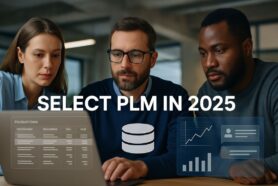
Suppliers and contractors are an essential part of your product development and manufacturing processes. The time when an entire product was designed and manufactured in a single place is gone forever. These days, an average manufacturing company will have dozens and sometimes hundreds of suppliers and contractors. I’ve learned that when it comes to efficient collaboration, companies are often making awful mistakes that can be avoided with enough information and knowledge. An attempt to bring the wrong systems and technologies can make these mistakes even more painful.
In my article today, I will focus on three aspects of PLM systems that allow you to collaborate with suppliers, design contractors, and contract manufacturers.
1- Governance Structure
Everything starts with a proper governance structure. If you have a mess, don’t bring computers, otherwise, you will get a computerized mess. You need to fix or align the process first. Technology won’t help and people can screw up any technology. You need to have a set of policies and processes in your organization to support supplier collaboration. Otherwise, any technology will stall and end up with failure. PLM brings an advanced technology to support collaboration but combined with old or inefficient processes it won’t work.
2- Sharing and ownership of data
There is a need to set up proper data structures to support supplier collaboration. The last one is defined by your own organization and all parties involved in the collaboration. Data structures, document types support access levels, process, approval, etc. Without setting the right structure, the collaboration will be stuck very fast and people will get back to the old practice bypassing the PLM system and its infrastructure, which often means emails, spreadsheets, and Dropbox/Google Drive/Sharepoint drives.
3- Technology support
A great strategy can easily fail without proper technological support. Supplier collaboration is on the checklist of most of PLM systems. However, the term is very broad. The devil is in details and what functions and features are support by each system should be evaluated before. The alignment between governance and data management requirements needs to validated. The security level, technology readiness, cost, and agreement to use technology by all suppliers must be in the shortlist to validate PLM technology is ready to support you.
Conclusion
You cannot over-communicate. You can only under-communicate. Take it as your goal when developing and deploying supply chain and contract manufacturing collaboration. Setting the governance structure is extremely important and this is the first step to make to align what data is managed, who has access, and how changes are monitored. Second, remember – technology matters. Whatever you will learn from software vendors is great, but keep in mind that the wrong technology can be a big slowness in your supply chain and contractor collaboration. Agreement about what data to share and how it will work is another aspect you want to clarify when setting PLM solutions to improve the communication between manufacturing companies and their contractors and suppliers.
Check our how OpenBOM helps thousands of users and manufacturing companies to streamline data management, processes, and escape the legacy of Excel spreadsheets.
Best, Oleg @ openbom dot com.
Want to learn more about PLM? Check out my Beyond PLM blog and PLM Book website
Read OpenBOM customer reviews on G2 Crowd to learn what customers are saying about OpenBOM.
Join our newsletter to receive a weekly portion of news, articles, and tips about OpenBOM and our community.









